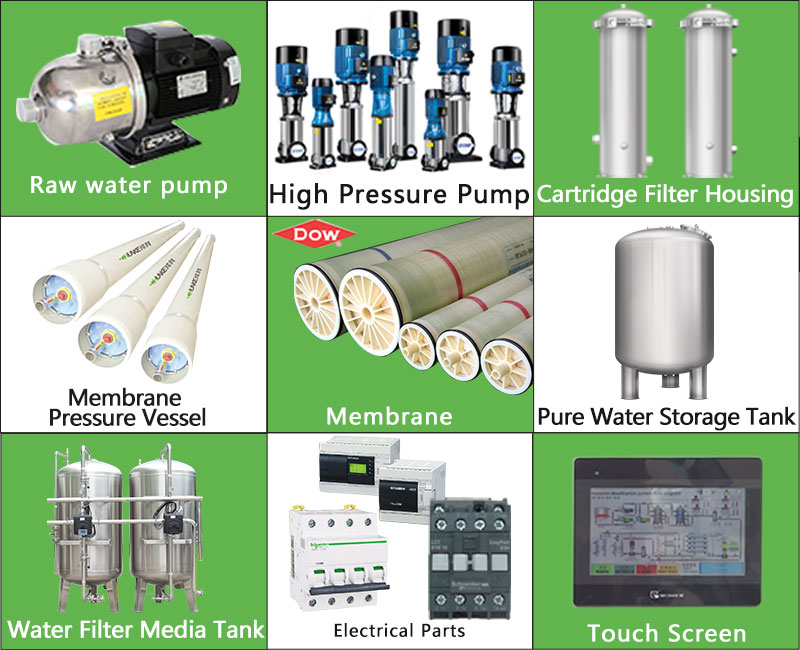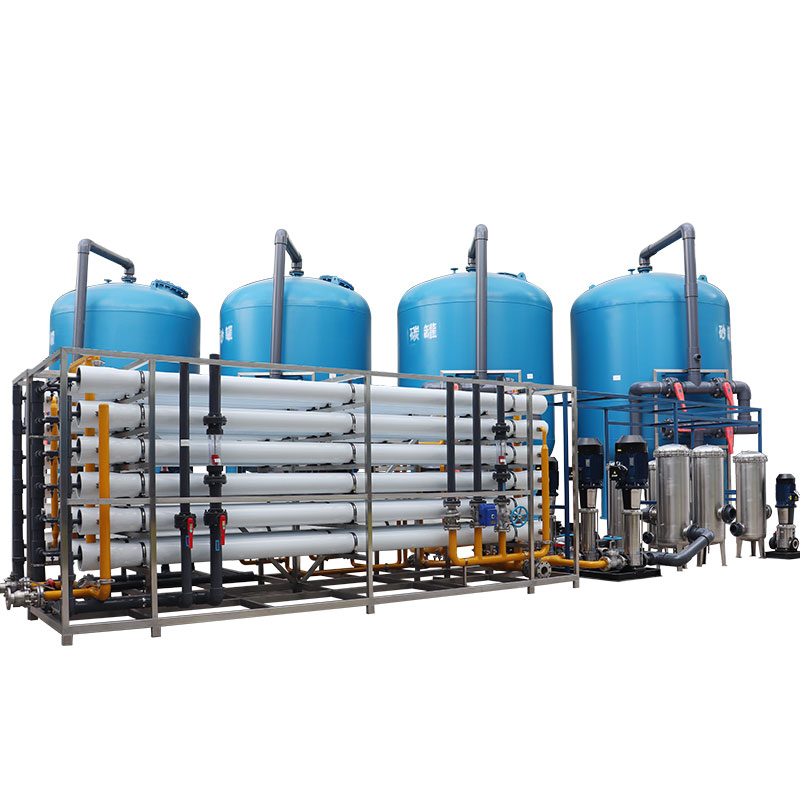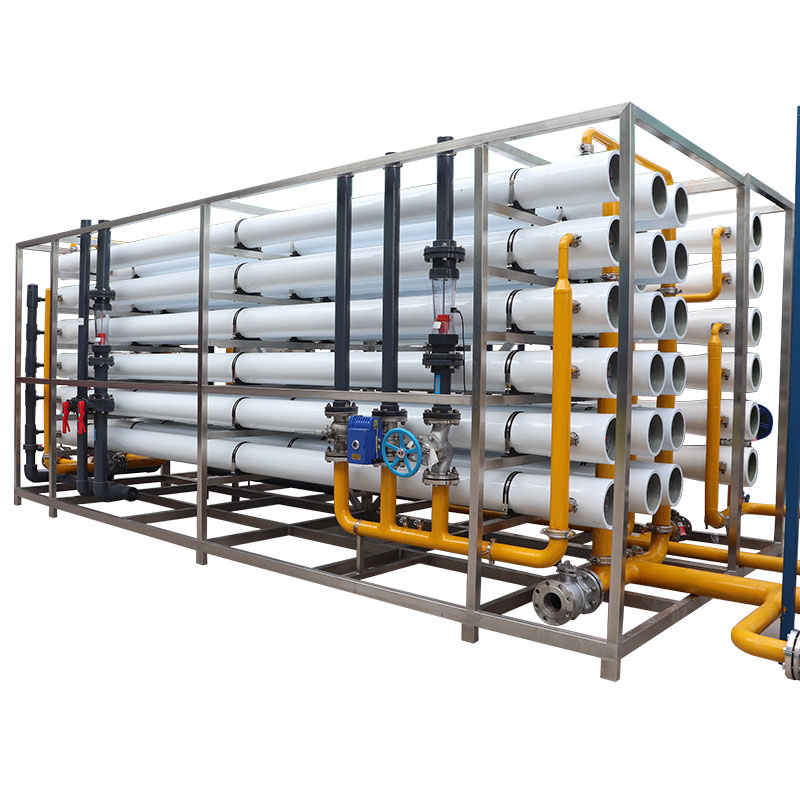What is the best filter to remove iron from well water?
Excessive iron in well water can cause a number of problems, such as yellow water, strange taste, and rust on pipes and equipment. Therefore, removing iron from well water becomes an important task in household water treatment.
So, what is the best filter to remove iron from well water? This article will delve into this question, analyze several common filter types, evaluate their advantages and disadvantages, and give suggestions for the best choice.

What form does iron exist in well water?
Before discussing the best filter to remove iron, we need to understand the form of iron in well water. Iron exists in two main forms in water: dissolved iron (Fe²⁺) and particulate iron (Fe³⁺).
1. Dissolved iron (Fe²⁺): colorless, soluble in water, when exposed to air, it will oxidize into rust-colored particulate iron.
2. Particulate iron (Fe³⁺): insoluble in water, exists in the form of solid particles, usually yellow-brown.
Knowing the form of iron is crucial to choosing the appropriate filter, because different filtration technologies have different effects on different forms of iron.
What are the types of filters to remove iron from well water?
There are a variety of filters available on the market for removing iron from well water, each with its own unique working principle and application scenario. Here are a few common types of filters:
1. Air oxidation filters
Air oxidation filters oxidize dissolved iron into granular iron by introducing air, which is then removed through a filter medium. The system usually includes an aerator and a sand filter.
● Advantages:
Easy to operate
Effective in removing high concentrations of dissolved iron
● Disadvantages:
Requires regular cleaning and maintenance
Not very effective with other soluble impurities
2. Catalyst filters
Catalyst filters use catalysts (such as green sand or manganese oxide) to accelerate the oxidation process of iron and remove the oxidized iron through a filter medium. This system is suitable for treating medium concentrations of iron and manganese.
● Advantages:
Efficient removal of iron and manganese
Relatively low maintenance requirements
● Disadvantages:
Catalysts need to be regenerated regularly
High initial investment cost
3. Water softeners
Water softeners exchange iron ions through ion exchange resins and are suitable for treating low concentrations of iron and hard water.
● Advantages:
Removes both hard water ions and iron ions
Suitable for home use
● Disadvantages:
Only suitable for low concentrations of iron
Requires regular resin regeneration
4. Reverse Osmosis System
Reverse osmosis system removes iron and other impurities through a semipermeable membrane and is suitable for treating a variety of pollutants.
● Advantages:
Efficient removal of a variety of pollutants, including iron
Provides high-quality drinking water
● Disadvantages:
Complex system, high maintenance cost
High wastewater rate
5. Multi-media filter
Multi-media filter removes iron and other suspended solids through multiple layers of different media filtration layers and is suitable for various water quality conditions.
● Advantages:
Large processing capacity, suitable for home and industrial use
Easy maintenance
● Disadvantages:
Poor removal of dissolved iron
Requires regular replacement of filter media

What is the best filter to remove iron from well water?
When choosing the best filter to remove iron from well water, you need to consider multiple factors, including iron concentration, water quality, home or industrial use, maintenance cost, etc. Based on a comprehensive evaluation of these factors, catalyst filters are generally considered the best choice for removing iron from well water for the following reasons:
1. Efficient removal of iron and manganese
Catalyst filters can efficiently remove iron and manganese from water, especially for medium and high concentrations of iron. Through catalytic oxidation, iron ions are quickly converted into insoluble granular iron, which is then removed by the filter media.
2. Relatively low maintenance requirements
Compared with other types of filters, catalyst filters have relatively low maintenance requirements. Although the catalyst needs to be regenerated regularly, the operation is simple and the cost is controllable.
3. Multifunctional treatment
Catalyst filters can not only remove iron and manganese, but also effectively treat other heavy metals and some organic pollutants, and have a wide range of applications.

Practical application cases
● Water treatment system in a rural community
A rural community relies on underground well water as its main water source, but the high iron content in the water makes it difficult for residents to use water. By installing a catalyst filter, the community successfully solved the problem of high iron content in the water and improved the water quality of residents.
● Case features:
1. High efficiency: The catalyst filter effectively removes iron and manganese from the well water, providing clear drinking water.
2. Economical: Although the initial investment is high, the long-term maintenance cost is low and economical and practical.
3. Applicability: The system design takes into account the actual water demand of the community and operates stably.
Conclusion
Removing iron from well water is an important task to ensure the safety and quality of household water. Through a comprehensive evaluation of the advantages and disadvantages of various filters, the catalyst filter is considered to be the best choice at present. It can not only remove iron and manganese efficiently, but also has relatively low maintenance requirements and wide applicability.




